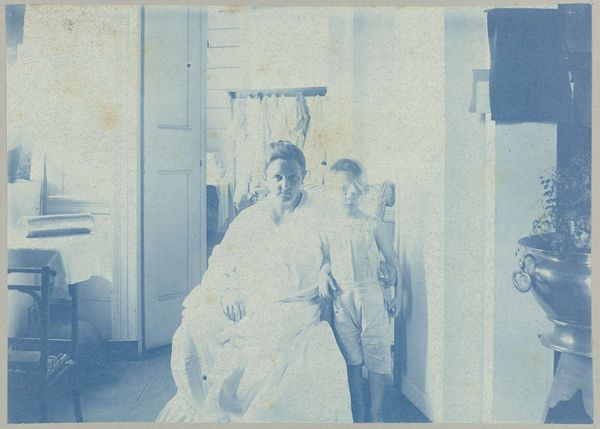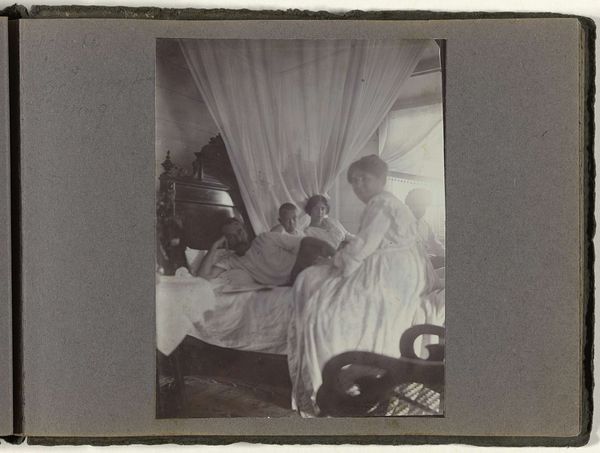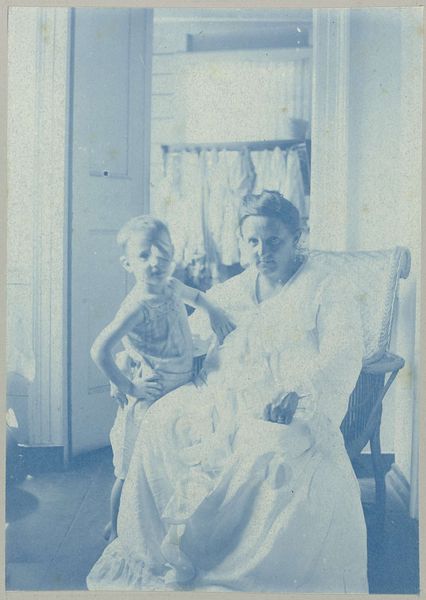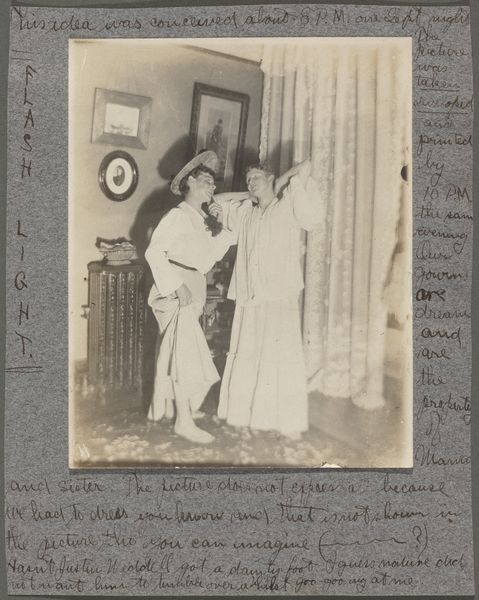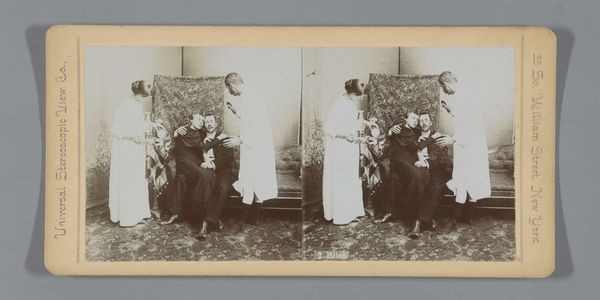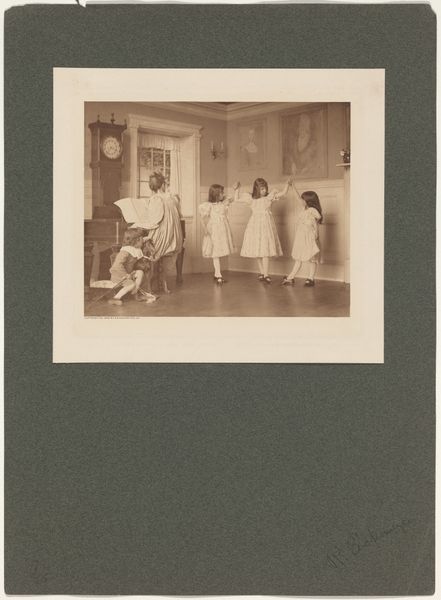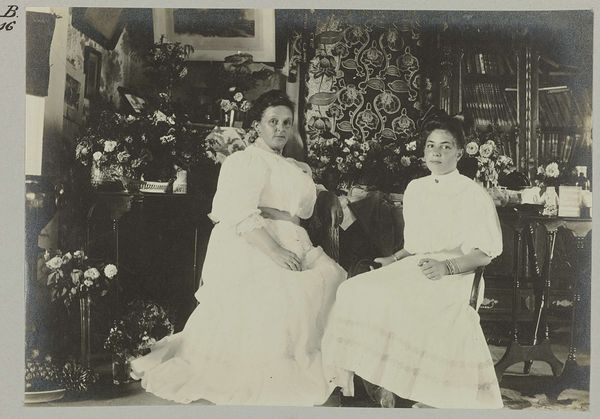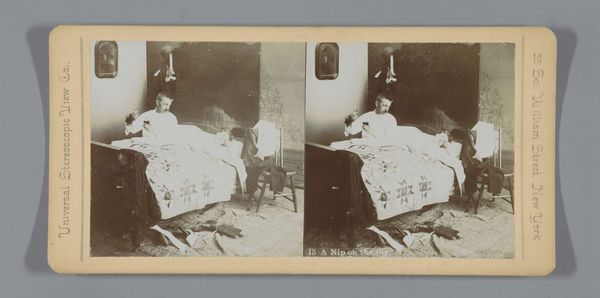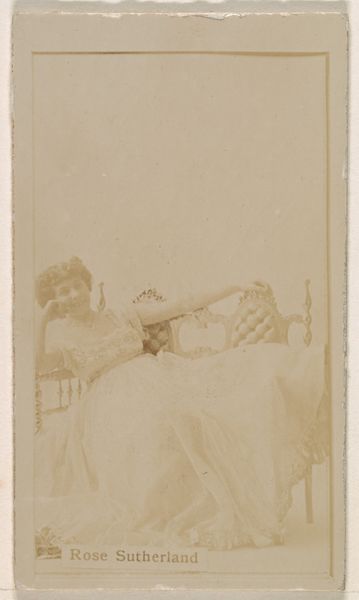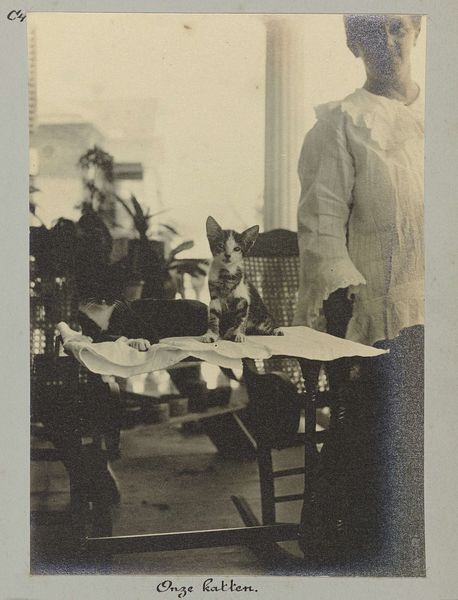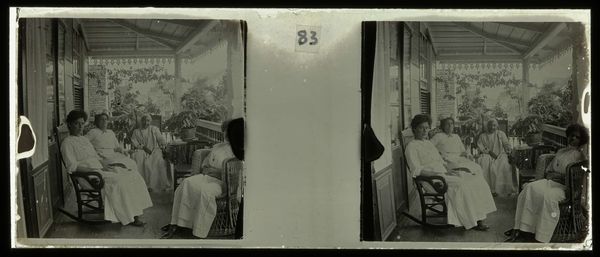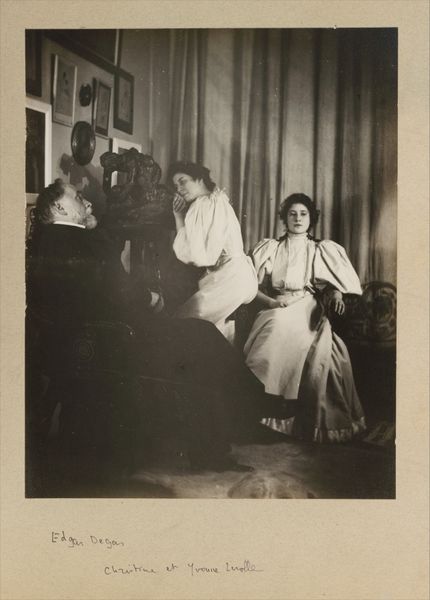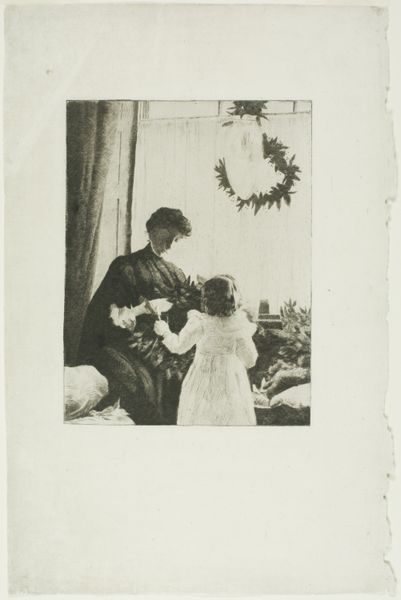
photography
#
portrait
#
photography
#
realism
Dimensions: height 115 mm, width 170 mm
Copyright: Rijks Museum: Open Domain
Editor: Here we have Hendrik Doijer’s “Pim Gekwetst,” a photograph from between 1903 and 1910. I find the domestic setting, with the visible laundry, quite striking for a portrait. What elements jump out at you? Curator: The photograph presents an intriguing insight into the means of photographic production at the turn of the century. I find the focus isn't solely on the subjects. Instead, look at the visible traces of everyday life – the laundry hanging in the background, the slightly disheveled table. Editor: So you are saying this photograph deliberately uses what some might see as 'clutter'? Curator: Precisely. It seems Doijer is making a conscious decision to incorporate the labor involved in maintaining a home. The imperfections and visible signs of work become central, almost challenging the traditional portrait's aspiration to idealization and timelessness. This shifts our attention to the social context and the work, often unpaid, required to sustain the scene. It highlights the making of this intimate scene, drawing our eye to the material conditions. Editor: It is like we are not supposed to ignore that domestic work occurs even alongside portraiture. How subversive. Curator: Yes, it subtly subverts the notion of art existing in a realm separate from daily toil and economic realities. In other words, consider how photography democratized art. Editor: It’s almost like the photograph becomes a document of not just the subjects, but also the means of their own reproduction and the invisible labour behind it. I had never looked at it that way. Thank you. Curator: Indeed. And that intersection is exactly where meaning is constructed. It challenges us to think about art not as detached objects, but as products intertwined with the social fabric and the material world.
Comments
No comments
Be the first to comment and join the conversation on the ultimate creative platform.
